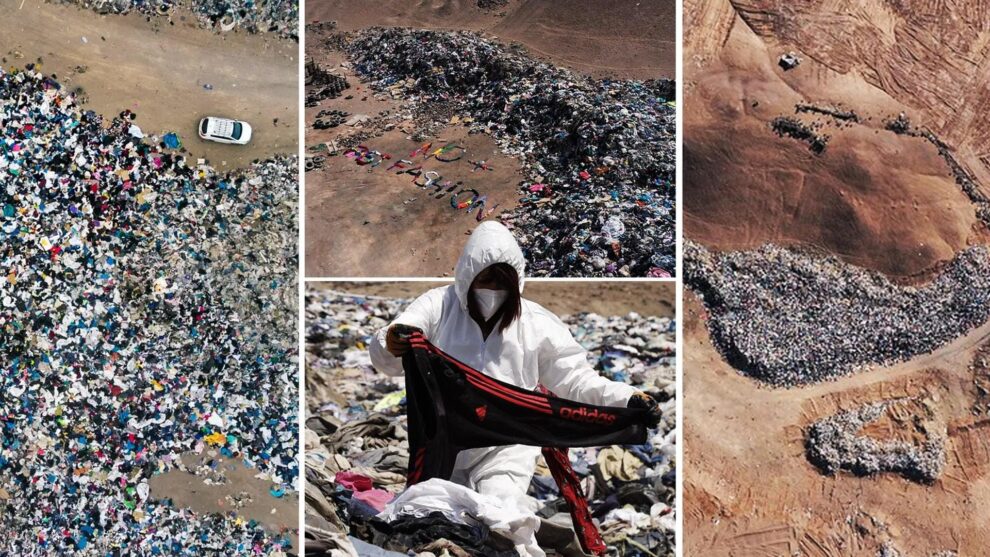The world of fast fashion is on a high with the entrance of newer clothing brands, fashion events, and more. But the question to be asked here is are we going in the right direction? Recently, a landfill of unused fast fashion clothing items was seen in the Atacama Desert in Chile. Here’s more into the fast fashion trends.
What is happening in Chile?
A picture shared by a satellite imagery app SkyFi shows a massive pile of garments. “The size of the pile and the pollution it’s causing is visible from space, making it clear that there is a need for change in the fashion industry,” SkyFi shared in its blog. It has 60,000 tons of clothing from Europe, Asia, and North America, according to BBC.
The ‘free zones’ in Chile
The nearby port city of Iquique has no tariffs, taxes, or customs-related fees which makes it a “free zone.” Clothes are received but not sold here and are eventually discarded in the desert due to the cost of retrieval. Some of these clothes contain microplastics which when burnt cause harm to the environment and the nearby community.
But why Chile?
Chile has long been a hub of both second-hand and unsold clothing. Traders bring in discarded clothing, primarily from Europe and the US, to resell here and in other countries in Latin America. However, more than half of the 60,000 tonnes of clothing that are imported each year wind up in shady desert dumps, which has terrible effects on the ecology and the neighborhood.
Clothing production has doubled
According to Earth.org, sales of clothing increased from 100 to 200 billion units annually. An estimated $500 billion worth of waste is produced annually as a result of discarding abandoned clothing rather than recycling. As more and more online retailers made it easy and free to return items, return rates have soared and now account for more than 30 percent of all purchases.
How does cloth production affect the environment
Many reports have suggested that the production of textiles alone is expected to emit 1.2 billion tonnes of greenhouse gases annually, accounting for 10% of all greenhouse gas emissions worldwide. The production process also takes a lot of water to produce the garments. The fashion sector is responsible for about 20 percent of the world’s water waste, as per BBC.
What it means
There have been many cases in the past where countries have sent back tons of unused clothes. A major reason for this is the mismatch between purchasing trends and production quantity. There are reports which suggest that while cloth production has increased, the average number of times an item was worn decreased by about 36 percent overall.
Here’s how you can reduce cloth waste at home
There are a few things you need to keep in mind while managing your wardrobe. It is not about how many clothes you own but rather how you use them. Remember to buy less and keep using clothes longer. Invest in sustainable brands and go for second-hand clothes wherever possible. Make sure to recycle or repurpose your old clothes.
Source: NewsBytes
















